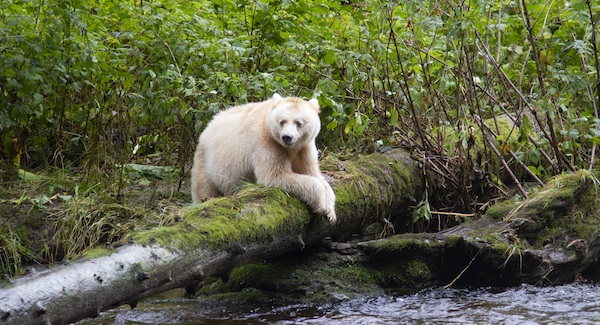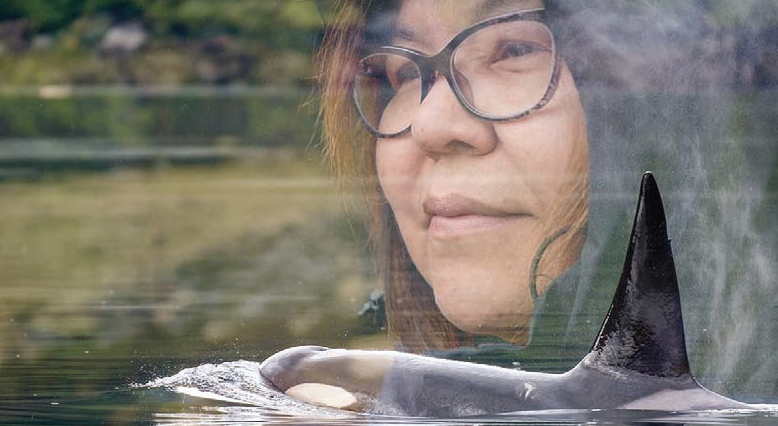In an article published in Corporate Knights magazine, CFN President and Heiltsuk Chief Marilyn Slett says there are clear and proven ways that business and government can support First Nations in building a sustainable economy while conserving our temperate rainforest.
As Canada ties economic stimulus strategies for corporations to its 2050 climate goals, both government and business have an opportunity to invest in a First Nations forest carbon financing model and make a meaningful commitment to address their climate impact.
In early May, the Prime Minister unveiled a new “bridge loan” program to support large businesses recovering from a pandemic economy. Among the conditions, companies must demonstrate how they will contribute to federal climate targets for decarbonization. By encouraging carbon offsetting in the plan, Canada has an opportunity to further reconciliation with Coastal First Nations and ensure our economies are not left behind in the recovery plan.
The Great Bear Forest Carbon Project – led by nine coastal First Nations – is the world’s largest forest carbon initiative. Vast amounts of carbon are stored by old growth trees in the Great Bear Rainforest on the North and Central Pacific Coast and Haida Gwaii. The forests here represent one quarter of the world’s remaining coastal temperate rainforests. As coastal people, who have lived here for 14,000 years, we know that keeping ocean and forest ecosystems healthy is the key to preserving our way of life.
To create a sustainable economy, coastal First Nations looked beyond the destructive resource extraction model common to our coast 20 years ago. In 2000, the Coastal First Nations began working with BC on land use planning. A landmark 2006 agreement lead to the protection of the Great Bear Rainforest, making 85% of the rainforest off-limits to industrial logging. Then in 2009, when the two Parties signed the Reconciliation Protocol, it allowed for the validation and sales of carbon credits.
Corporations looking to take steps to meet their emission reduction targets can invest in protecting that rainforest with Great Bear Carbon Credits. All revenue from offset sales goes directly back into First Nations stewardship of our lands and waters, and supports projects to ensure traditional governance and community well-being.
Building off land use agreements, this carbon sequestration funding model also contributes to the adjacent coastal and marine areas. The carbon offsets support the innovative funding model of the Marine Planning Partnership for the North Pacific Coast (MaPP), globally recognized as the gold-standard for collaborative marine use planning. MaPP undertakes marine ecosystem-based management with 17 First Nations and British Columbia.
Carbon offset sales support Coastal Guardian Watchmen who are highly-trained and experienced guardians of land, water, wildlife and cultural sites. In Kitasoo/Xais’xais territory on the Central Coast, Guardian Watchmen have led monitoring of world-renowned grizzly bear habitat and eradicated illegal hunting.
With dwindling government resources for science research, the carbon finance model has helped First Nations stewardship offices undertake some of the most advanced –and in some places, the only – species monitoring and wildlife data collection on the BC coast. As well, climate change research and planning by communities is taking place. This is science that benefits all Canadians. In Heiltsuk territory, offset funds provide core funding for advanced scientific research on crab, rock cod and invasive species to inform a sustainable approach to Indigenous fisheries management. Offset revenue also finances stewardship activities to monitor at-risk whales and Pacific salmon species in Haida Gwaii.
Carbon financing also offers a source of long-term funding for communities to explore meaningful opportunities for renewable energy projects on a diesel-dependent coast, sustainable shellfish aquaculture, ecotourism and non-timber forest product ventures.
The Great Bear Rainforest Agreements have put in place a world-leading model of ecosystem-based forestry management: 85% of our coastal temperate rainforest is set aside for protection and is now permanently off-limits to industrial logging.
Towering old growth trees that reach up to 1,000 years in age can still be found in our territories. Our streams and rivers sustain 20% of the world’s wild salmon. Rainforest, ocean estuaries, fjords and islands support remarkable biological diversity – including iconic species such as grizzlies, Spirit bears and black bears, coastal Pacific wolves, humpback and killer whales and six million migratory birds.
The Great Bear Forest Carbon Project offers Canadian businesses and governments the chance to build back better in the wake of COVID-19 by working with Coastal First Nations to protect the world’s largest intact temperate rainforest right here on our Pacific Coast. In the effort to regain lost economic momentum during the pandemic, buying Great Bear credits is an opportunity to invest in a conservation economy that balances ecological integrity with human well-being.
As the country works to revitalize the national economy and meet its 2050 climate goals, Canada must ensure First Nations economies are not left behind and build the new normal together. The federal government has the opportunity to support investment in sustainable jobs in our communities and protect climate resiliency by conserving one of the world’s largest carbon storage rainforests for future generations.


